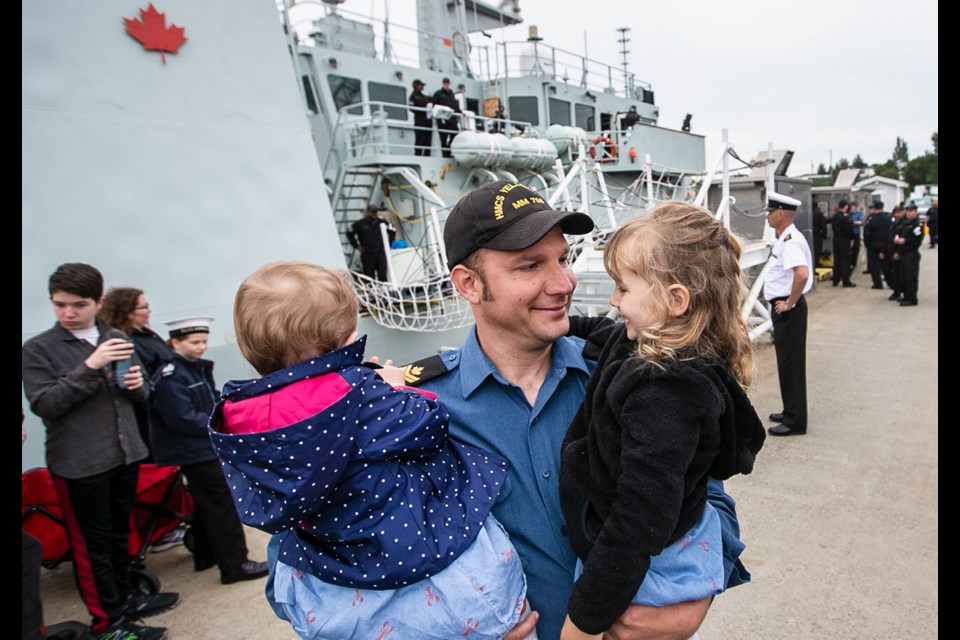Families and friends of the 90 sailors on HMCS Yellowknife and HMCS Whitehorse crowded a dock at CFB Esquimalt Thursday to welcome their kin home after two months at sea.
“There’s been lots of changes and our littlest one said her first word and took her first steps,” said Laura Roberts, mother of two-year-old Blythe and one-year-old Florence and wife of navy Lt. Ben Roberts of Yellowknife.
“These two girls have been talking about Daddy coming home now for weeks,” Laura Roberts said at the dock.
The two Kingston-class coastal defence vessels had been deployed off the Pacific coast of Central America in Operation Caribbe, battling drug trafficking on the high seas.
Together, the two vessels intercepted five narcotics shipments and seized 2,657 kilograms of cocaine and 25 kilograms of marijuana, still illegal for import into the U.S.
Operation Caribbe is now 13 years old and represents Canada’s part in an ongoing joint effort with the U.S. and other nations to stop drug transport at sea. Canadian ships take U.S. Coast Guard officials on board who make seizures and arrests on the Caribbean and Eastern Pacific.
The latest Pacific effort was assisted by a Canadian Air Force CP-140 Aurora, long-range patrol aircraft and members of the Canadian army.
Lt.-Cmdr. Donald Thompson-Greiff, commanding officer of Yellowknife, and Lt. Jeff Chura, commanding officer of Whitehorse, both expressed enormous pride in their crews and fellow forces members.
“These sailors, soldiers and aviators are world-class, by far they are world-class,” Thompson-Greiff told reporters gathered on the bridge of Yellowknife.
“It’s a remarkable pleasure to lead these men and women,” he said. “They did fantastic and I’m very proud of them.”
Meanwhile, over at the CFB Esquimalt Naval and Military Museum, curators put final touches on an exhibit titled Hero Warship: HMCS Beacon Hill and Her Daring Commander.
The exhibit is an exploration of the Second World War frigate Beacon Hill and her commanding officer, Lt. Cmdr. Ted Simmons, who died in 1988 at 78.
HMCS Beacon Hill was built at the now defunct Yarrow’s shipyard in Esquimalt and launched in 1943. Initial attempts to name the vessel HMCS Victoria failed. The British complained they already had HMS Victorious. So the ship was named for Victoria’s Beacon Hill.
Simmons was born in Vernon and worked as an interior decorator with Standard Furniture in Victoria. In 1939, he joined the Royal Canadian Naval Volunteer Reserve. Later, Simmons served on convoy escort duty in the North Atlantic.
By the end of the war, Simmons was one of the most decorated members of the volunteer reserve, with citations that included the Distinguished Service Cross and the Distinguished Service Order. The sale of Simmons’ medals was the subject of controversy last year.
Corvette K-225, a 1943 Hollywood movie starring Randolph Scott, is partly based on Simmons’ wartime heroics.
The official opening ceremony of Hero Warship happens today and the exhibit will continue until Sept. 30.
•Go to navalandmilitarymuseum.org for hours and more details.



